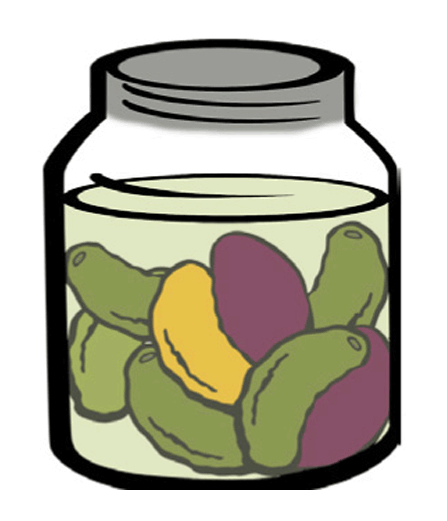Bottled Bounty

As the evanescent warmth of autumn begins to fade into winter, it’s easy to go overboard at the farmers market. All the vendors hawking crisp apples, juicy late-harvest berries, and fresh-from-the-farm vegetables can turn even the most conservative shopper into an overloaded Sherpa, carrying enough food to feed a family for weeks.
And that’s to say nothing of the surprising harvest that might be growing in your backyard. The only downside to our region’s fertility is the bounty’s short shelf life, leaving many of us to guiltily toss more than a few shriveled things into the compost heap—that is, unless we’ve learned to preserve our spoils.
Preserving might seem like the sort of overwhelming, time-consuming project best suited to farmhands and grandmothers. But as the growing population of urban homesteaders and farmers-market junkies has discovered, there are many simple, painless, and relatively quick ways to seal away fall’s bounty in your home kitchen. So why not extend the seasonality of your favorite foods and continue to eat well (and local) during the market-free months, when all but the heartiest backyard gardeners’ plots are mud?
Heed Your Habits
Do not cart crates of apples home to make applesauce before asking yourself this: are you doing this for food or for karma? “Know what you like,” says Harriet Fasenfest, cofounder of Preserve (4039 NE 14th Ave), a local cooking and food-preservation school. Apple or pear sauce is great for eating or baking, and it’s cheap to make. “Still, if you don’t like applesauce,” she cautions, “don’t make it.”
Similarly, don’t preserve anything without finding space in which to store it first. Clear ample surface area in the pantry and refrigerator, and make certain your freezer has room to spare. For freezing larger quantities of foods, opt for an inexpensive, stand-alone chest freezer; it will increase your storage capacity and save energy while costing only dollars a month to run.
Stock Up
Preserving will live up to its time-consuming reputation if you don’t prep your pantry first. “Go buy a large bag of sugar, a large jug of vinegar, and canning jars at the beginning of the year,” Laura Ohm tells students in her Urban Growth Bounty preserving course. If you have your canning storage ready and some Ziploc freezer bags, she adds, “then preserving just becomes one more thing you’re cooking that night.”
Cash & Carry (multiple locations) stocks bulk foodstuffs, while grocers such as Fred Meyer (multiple locations), Bi-Mart (multiple locations), and Mirador Community Store (2106 SE Division St) supply general preserving equipment such as boiling-water canners, canning jars and lids, and jar lifters.
Hit the Market
If you’re a binge buyer at the farmers market, you’re ready to join the food-preserving tradition. However, if “finicky eater” is a better description of your shopping habits, prepare for a new strategy: bigger bags (or a wagon) and larger withdrawals from the cash machine during harvest season.
Look for produce that’s in its peak season to capture the freshest flavors of fall. Skip the stragglers left over from summer (rhubarb stalks and overripe strawberries are often still hanging around), and bedeck your basket with late-harvest blackberries, rosy-cheeked peaches, and fresh veggies like carrots, beans, and cucumbers. Then, once you’ve lugged your provisions home, tackle the task at hand—immediately. “Can as soon as you can,” says home economist and former Preserve instructor Marjorie Braker. “Everything gradually loses quality when it’s in storage. If you can get it into the can or into the freezer as soon as possible, you’ll have the best results.”
Preserving 101
Comb through your cookbooks and favorite food blogs, and you’ll quickly discover a mind-boggling array of methods for turning the fall bounty into pickled produce and jams. Use a reputable recipe from a knowledgeable source (see sidebar) to learn the proper ingredient ratios and to glean storage instructions. Here, we’ve outlined the basic steps of a few preserving techniques to give you an idea of what they require before you begin.




